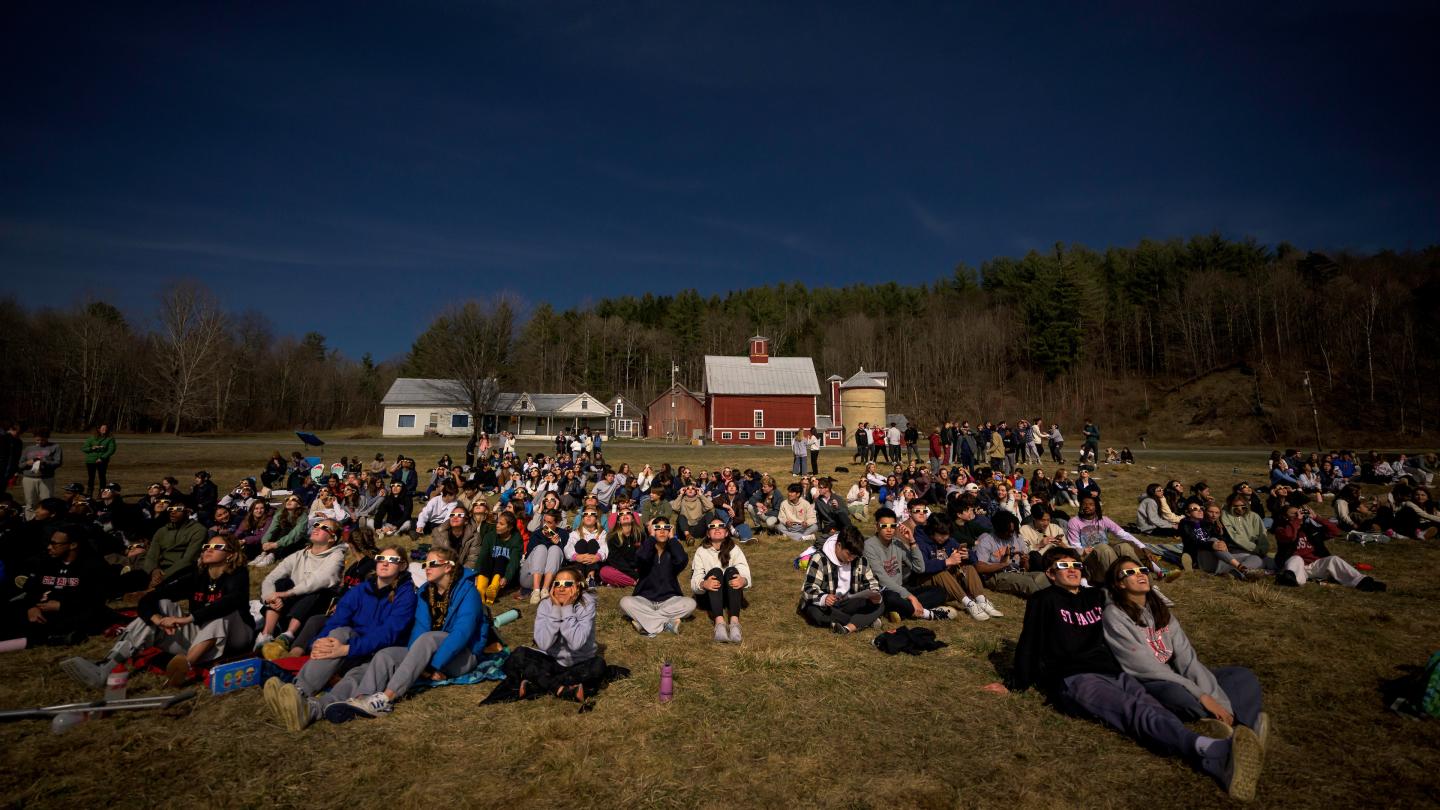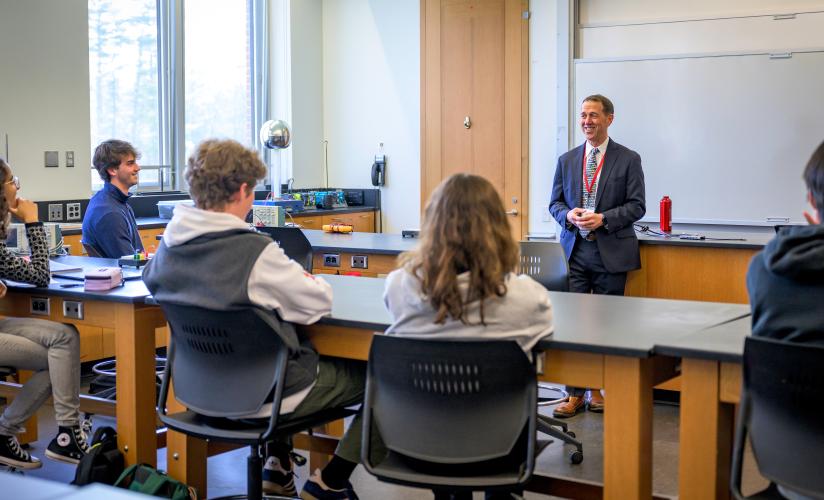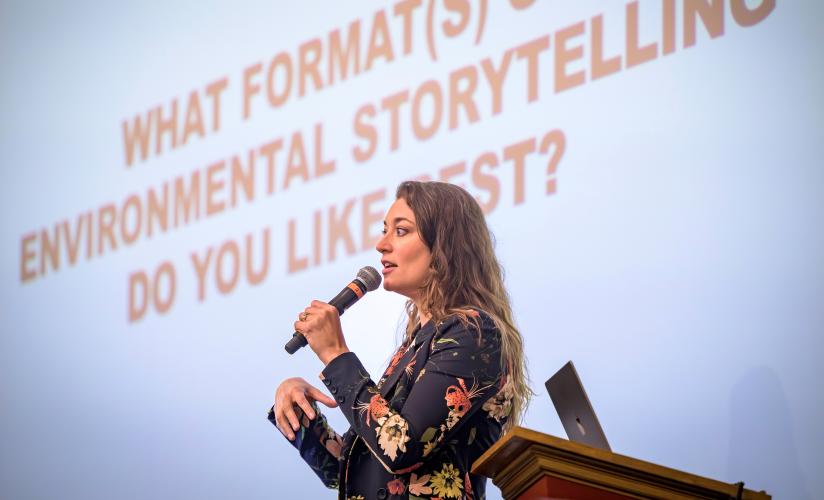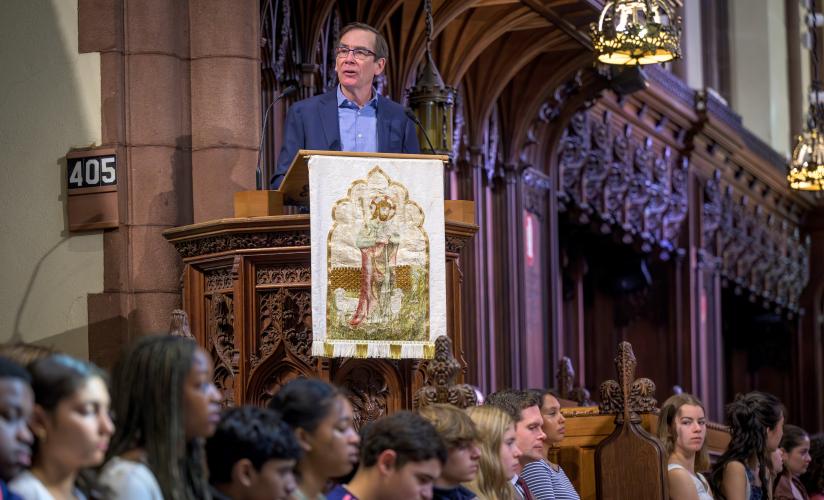

Nearly 500 members of the SPS community went to witness April 8’s solar eclipse.
BY KRISTIN DUISBERG
It was an experience three minutes in duration, and more than two years in the making. For St. Paul’s School Science Teacher Seth Cohen, the opportunity to witness totality during the April 8 solar eclipse that angled across the United States in a narrow track from Texas to Maine was about more than revisiting the phenomenon for himself. It also was about sharing the eerie and awe-inspiring moment with more than 40 of his faculty colleagues, Rector Kathy Giles and 410 SPS students who made the trip to Foote Brook Farm in Johnson, Vermont.
Cohen first started thinking about putting together an SPS trip for the 2024 eclipse after traveling with his wife and a couple of friends to witness the last total eclipse to cross the continental United States on Aug. 21, 2017. Two years ago, he began putting the plan in motion, finding a location along the path of totality that could accommodate every member of the SPS community who wished to make the trip and getting School approval for the daylong fieldtrip — knowing that the 5-hour round trip would take much longer given the number of cars that would inevitably be on the road.
“Seeing a total solar eclipse is potentially a once-in-a-lifetime opportunity,” Cohen explains. “They happen somewhere on Earth about every year and a half, but having one happen so close to where you live is very rare. It’s pretty mind-blowing to see a gaping black circle in the sky with the glowing ring of the corona around it, while all around you the world has darkened into dusk with sunset colors on every horizon.” And the difference between almost-totality and totality, he adds, is everything. “Even when the sun is 99% covered, the sky doesn’t really get dark, and the little sliver of the sun that still shines is bright enough that you can’t take off your protective glasses. Only at full totality do you really get the incredible experience. [One artist] sums it up this way: ‘A partial eclipse is like a cool sunset. A total eclipse is like someone broke the sky.’”
That difference was felt back in Millville, where the students, faculty and staff who elected to stay behind stepped outside shortly before 3:30 p.m. to take a peek through eclipse glasses or the solar telescope in the Lindsay Center for Mathematics and Science at a 96% eclipse that drove a temperature drop and briefly dimmed the sky but wasn’t visible to unprotected eyes. Up in northern Vermont, Cohen took a video of his almost-500 fellow travelers at the moment of totality, capturing not just the darkness that fell but the chorus of gasps and appreciative cries that went up from students and teachers alike. “It was everything I hoped it would be,” he says.
And while the trip back to Concord was indeed (very!) long, students’ reactions in the immediate aftermath of totality reflected how valuable the experience had been to them. “That was life-changing,” said one Sixth Former. “I think my perspective on space and the world just changed so much.” Said another, “It literally felt like a movie.”
Cohen’s efforts were part of a larger team effort to share the experience of totality, something the continental U.S. will not see again for another two decades, with the SPS community. Fellow Science Teacher Rick Pacelli helped organize the day along with members of the Dean of Students office and FLIK, the School’s dining service. Mathematics Teacher Christopher Morse designed and wrote an eclipse-themed puzzle hunt — 11 crossword puzzles that came together to form one meta-puzzle — that kept teams of students and faculty busy both in Vermont and New Hampshire before and after the solar event.



